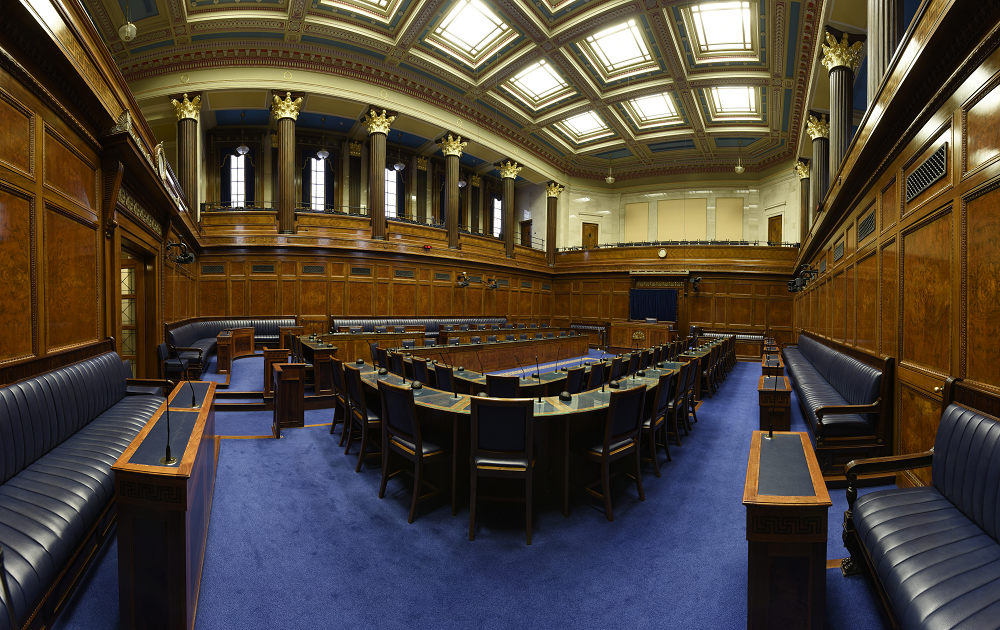Women in public life: Where does Northern Ireland stand?
Please note that more up-to-date statistics on gender representation can be found in the RaISe research paper Who Runs Northern Ireland? A Summary of Statistics Relating to Gender and Power in 2020.
Following the February 2016 election to Dáil Éireann, the Northern Ireland Assembly had the lowest representation of women of any legislature in Britain and Ireland. At 22%, the Dáil brushed in above the Assembly’s 21%. Even then, the number of women Members of the Legislative Assembly (MLAs) had been enhanced by more female than male co-options during the mandate: in 2011, 19% of elected MLAs were women. However, the 2016 Assembly election saw an unprecedented 30 female MLAs returned (28%), without the use of quotas.
The political parties have recognised the under-representation of women as a problem: a review by the Assembly and Executive Review Committee (AERC) in 2014 found the committee unanimous on the need to increase the participation of women in politics, but divided on the methods to use. Candidate quotas such as the 30% in force in the Dáil elections were ruled out. However, there have been a number of initiatives that have proceeded. The Speaker’s Reference Group on a Gender Sensitive Assembly and a women’s parliamentary caucus were established as an outcome of the AERC review and the focus has continued with women in public life being a topic for the North-South Parliamentary Association, a forum for MLAs and TDs from the Dáil to discuss issues of cross-border interest.
Prior to the reduction in the number of government departments in 2016, four of the thirteen ministers were women and both of the junior ministers in the Office of the First Minister and deputy First Minister (OFMdFM) were women. In the post-election executive, four of the ten ministers and one of the two junior ministers were women.
Often seen as a training ground for politicians, female representation in local councils has seen a shallow increase, from 21% in 2005 to 25% in 2014. While two of the three Northern Ireland Members of the European Parliament (MEPs) are women, two of the eighteen Members of Parliament (MPs) representing Northern Ireland constituencies at Westminster are women.
While 36% of public appointments in 2014 were held by women, 21% of chairs were female. A report published by the Commissioner for Public Appointments in 2014 found that, despite efforts to increase diversity, they had little impact on changing the profile of public appointments.
| Position | % Female | Year of data |
| Members of the Legislative Assembly | 27% | 2016 |
| Members of Parliament | 11% | 2016 |
| Local councillors | 25% | 2014 |
| Public appointments | 36% | 2014 |
| Chairs of public bodies | 21% | 2014 |
| Managers, directors and officials | 37% | 2011 |
| Civil servants Grade 5+ | 31% | 2013 |
| Permanent secretaries | 0% | 2016 |
| Ministers and junior ministers | 47% | 2016 |
| Board members of the top 100 companies in NI | 15% | 2015 |
| Senior judges | 0% | 2016 |
| High Court judges | 20% | 2016 |
| County Court judges | 28% | 2016 |
In the field of employment, the 2011 Census indicated that 37% of managers, directors and senior officials were female. While in the Northern Ireland Civil Service, 31% of Grade 5s and above were recorded as female in 2013, there are no female permanent secretaries running departments. A survey of the management boards of the top 100 companies in Northern Ireland in 2015 found that 15% of members of those boards were female.
In the judiciary, the Lord Chief Justice and the three Lord Justices of Appeal are all men, but two female High Court Judges were appointed in 2015 of a total of ten. Five of the eighteen County Court Judges are female.
Politics can then be seen in a context of general under-representation of women in decision-making roles. So what are the barriers to women’s participation in senior posts? Studies over the years have suggested:
- The ‘masculine’ nature of such sectors, such as the practice of politics;
- ‘Traditional’ assumptions about what women and men do in work and society;
- Assumptions in society that women should be the primary carer for the family;
- Discrimination by men (and women) who do not think women should be in senior roles;
- Confidence issues associated with entering a field that is perceived as hostile to women; and
- Popular images of leadership that portray men in decision-making roles.
Politics is a high profile occupation that has the potential to produce role models to encourage more women into public life. Measures to increase the participation of women in politics can include party candidate selection processes that favour more women, family-friendly arrangements in the legislature or support mechanisms for women.
Quotas have proved successful in increasing the proportion of female election candidates to the Dáil, but in the absence of agreement on quotas for women in Northern Ireland, a start has been made to look at the environment of the Northern Ireland Assembly to establish where it can be more welcoming to women. In addition, the newly-established women’s caucus can serve to offer mutual support to women who may feel in a minority.



